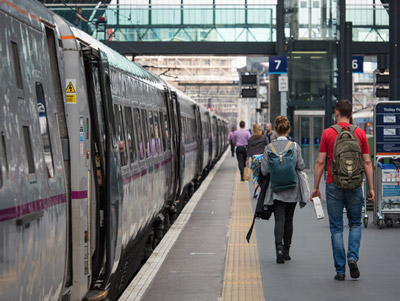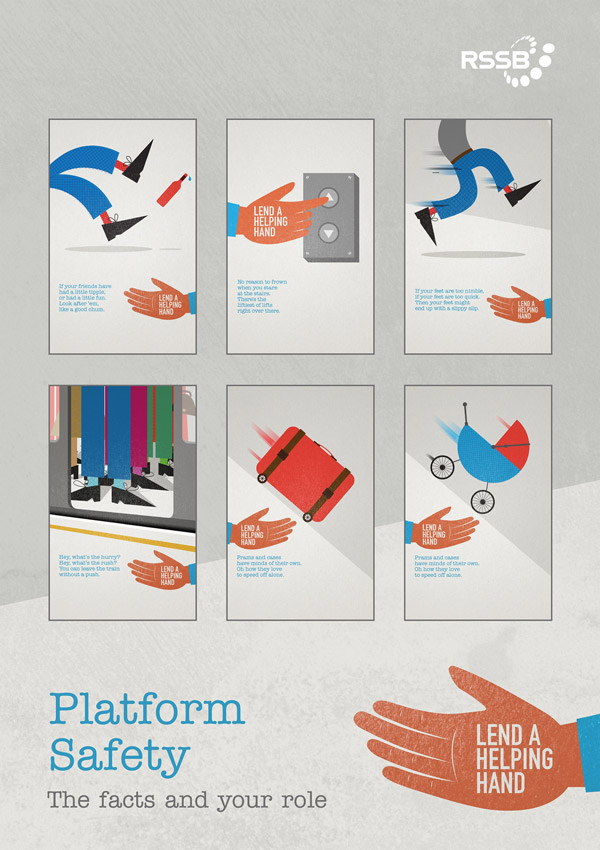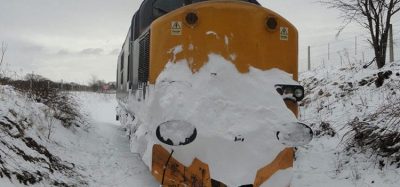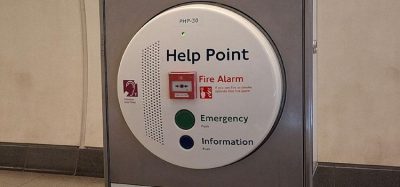Improving station safety & reducing incidents on platforms
Posted: 11 February 2016 | | 3 comments
The Rail Safety and Standards Board (RSSB) speaks to Global Railway Review about the launch of a new guide aimed at improving station safety and reducing platform-related accidents… A new booklet launched by the RSSB, will act as a new guide for people working in trains stations helping them understand the critical role they can […]


The Rail Safety and Standards Board (RSSB) speaks to Global Railway Review about the launch of a new guide aimed at improving station safety and reducing platform-related accidents…


A new booklet launched by the RSSB, will act as a new guide for people working in trains stations helping them understand the critical role they can play in reducing injuries on station platforms and provide safe travel for all passengers. Last year, Network Rail and RSSB combined to launch the ‘Lend a Helping Hand’ campaign which reminded people to take extra care in stations and encouraged people to reach out and help if they saw someone who was at risk.


RSSB’s Director of Research and Standards Mark Phillips commented, “As congestion in the station increases so too does the risk of slipping or falling. We have created the “Lend a Helping Hand” campaign which aims to reach out to every member of the travelling public. However, we can’t afford to be complacent and must bear this advice in mind all year round.”
Accidents on the platform are the biggest fatality risk for passengers on the railway. In the last five years, 19 people have been killed and over 7,000 injured around the edge of station platforms. These accidents can happen when getting on or off a train or even when there is no train stopped at the platform.
19 people killed and over 7,000 injured around the edge of station platforms
Mr Phillips added: “People in a safety critical role have an obvious part to play but accidents at the platform edge can be the result of actions, behaviours and decisions taken by passengers long before reaching the platform edge. Intervention by staff at the ticket office, within the station or at the gate line can really help to influence passenger behaviour and potentially reduce the occurrence of these incidents”


The booklet entitled “Platform Safety. The facts and your role”, is a guide to key facts and figures covering the most common types of accidents that happen at the platform edge and the types of people who are most at risk based on evidence collated by the RSSB.
The RSSB guidance includes:
|
“Many people feel behaviours that put them at risk are actually safe”
“Our research shows that, unfortunately, many people feel behaviours that put them at risk are actually safe,” added Mark Phillips. “Standing too close to the platform edge as a train is arriving or expecting the train doors to reopen if you get something stuck in them are common unsafe behaviours. Staff on stations can play a vital role in keeping passengers safe, even when they don’t always look after themselves”.


An accident can potentially happen to anyone at any time. RSSB research suggests there are patterns in accident statistics that identify who is most at risk. Being aware of these patterns can help station staff recognise who might need help. Here are some key facts from the latest RSSB research:
|
The RSSB’s ‘Platform Safety. The facts and your role’ guide can be downloaded here.







Improve the sound quality of platform announcements, as background noise from the tunnels and trains that are entering or exiting is reduced.
Network Rail spent a large amount of money making the train-platform interface more dangerous at Edinburgh Waverley station. They increased both the vertical and horizontal gap between the train and the platform by around two to three inches all across the station. Why? No-one could say. You can now get a catering trolley down between the train and the platform at certain points – it has to be more dangerous for the young, the old , the inebriated, the disabled, etc..
Let’s hope that this is not the pattern for other station upgrades.
A very good article for safety of people traveling by train.